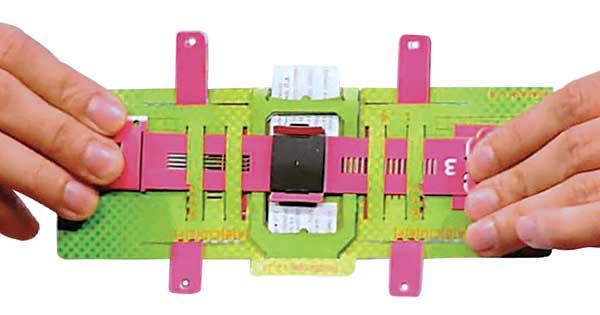
Researchers at Stanford University have developed a paper microscope that costs less than a dollar to produce and has the potential of revolutionizing public health. The Foldscope (above) starts as a flat sheet of paper embedded with micro-optics, a light-emitting diode, and a watch battery. Folded origami-style, it becomes a functional microscope capable of 2,000X magnification and submicron resolution.
Traditional research microscopes—expensive, heavy, and difficult to maintain—are less than ideal under rugged field conditions when the goal is simply to determine whether someone has a disease, explains Manu Prakash, assistant professor of bioengineering and leader of the Stanford research team. In contrast, the pocket-sized Foldscope comes in application-specific versions, weighs less than a couple of nickels, requires no external power, can project microscopy images on a wall for teaching, and is nearly indestructible. Employing standard microscope sample slides, it can be used to diagnose African sleeping sickness, schistosomiasis, malaria, and Chagas disease.
When used with a smartphone, the Foldscope can record and transmit an image, but cellular technology isn’t required. “We want to reach people in rural areas of developing countries” beyond the world of cell phones, Prakash says. For him, the real beauty of the Foldscope is that all you need is one (very special) piece of paper.


